With its city class and provincial charm, Bordeaux is an attractive visitor vacation spot in Southwest France. Bordeaux is referred to as the “Port of the Moon” due to the fact of its romantic place on a crescent-shaped bend of the Garonne River. In this outstanding placing that allowed exchange to flourish, the metropolis has a prosperous cultural heritage relationship returned to antiquity.
UNESCO declared Bordeaux a World Heritage Site in 1998 thanks to the city’s wealth of architectural treasures. More than 350 constructions are categorized as historic monuments.
Despite its amazing array of remarkable landmarks, Bordeaux is no longer a traveller trap. It’s a shiny working metropolis with bustling cafés, a going on restaurant scene, standard open-air markets, and a booming high-tech industry.
Discover the exceptional locations to go to in this lovely ancient metropolis with our listing of the pinnacle sights and matters to do in Bordeaux.
- Cathédrale Saint-André
Cathédrale Saint-André
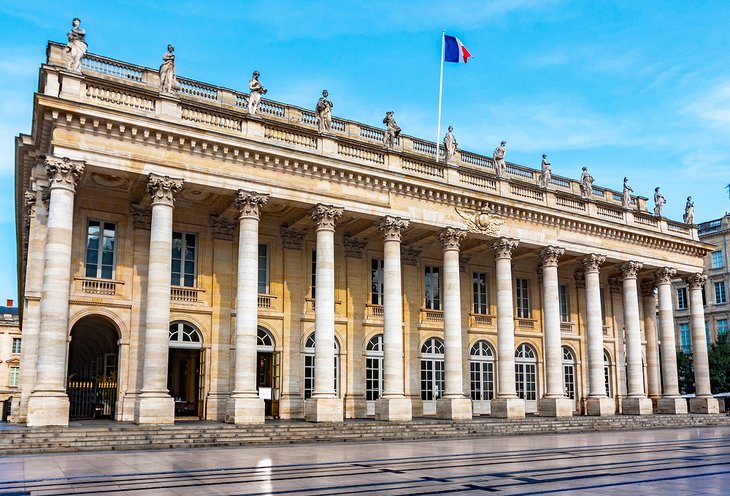
Cathédrale Saint-André
A location of historic significance in the coronary heart of Bordeaux, the Cathedral of Saint Andrew dates lower back to the twelfth century. Declared a UNESCO World Heritage Site, this cathedral used to be phase of the medieval Way of Saint James pilgrimage trail. Pilgrims traveled thru Bordeaux from the Médoc, Tours, and the British Isles on their way to Santiago de Compostela in Spain.
Comparable to the Notre-Dame in Paris in its grandeur, the Cathedral of Saint Andrew has an remarkable facade with sculptures of the Last Supper, the Ascension, and Christ in Majesty.
Interestingly, the western the front aspect of the cathedral is absolutely unadorned, considering it was once firstly too shut to the ancient city walls. However, now contrary the cathedral stands the Hôtel de Ville (Town Hall), a remarkable 18th-century neoclassical building.
During the summertime (in July and August), the International Organ Festival is held at the cathedral. Attending an organ live performance in the cathedral’s heavenly placing is amongst the most fun matters to do in Bordeaux. Some of Europe’s most gifted organists operate at the festival.
The Cathedral of Saint Andrew is open to the public for visits Wednesday thru Saturday from 2:30pm till 5:30pm.
Address: Place Pey Berland, Bordeaux
- Attend a Performance or Tour Le Grand-Théâtre
Le Grand-Théâtre, Bordeaux

Le Grand-Théâtre, Bordeaux
The Grand-Théâtre is the centerpiece of the Place de la Comédie, a hub of town existence and the historical website online of the Roman Forum. One of the city’s most emblematic buildings, this enormous theater used to be constructed in 1780 in the harmonious neoclassical fashion of Bordeaux.
The constructing was once designed by means of architect Victor Louis, who additionally designed the Palais-Royal and the Théâtre de la Comédie-Française in Paris in the late 18th century. The exterior facets 12 massive Corinthian columns alongside with statues representing the 9 muses and the goddesses Juno, Venus, and Minerva.
The theater’s indoors points gorgeous foyers and a grand staircase that stimulated Charles Garnier’s graph of the Paris Opera House. A magnificent 400-light chandelier made of Bohemian crystals provides to the opulent ambience.
Guided excursions (in French) are handy for these who would like to see the theater’s lavish interior, which includes the auditorium and behind the scenes area.
The most exciting way to find out the Grand-Théâtre is with the aid of attending a ballet, opera performance, or tune recital. The Grand Théâtre is a overall performance venue for the Ballet de l’Opéra National de Bordeaux and Opéra National de Bordeaux companies, as nicely as different prestigious track recitals.
Address: Place de la Comédie, Bordeaux
- Place de la Bourse
Place de la Bourse
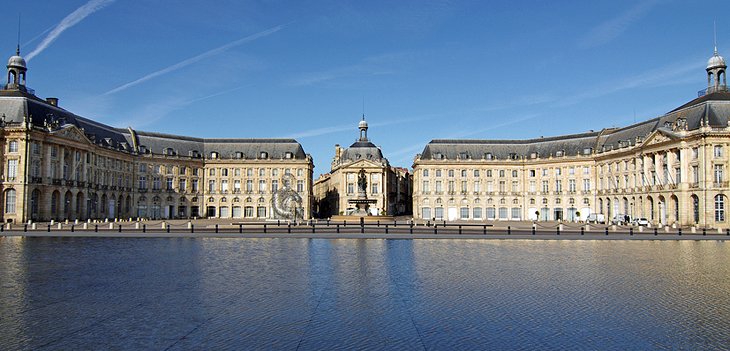
Place de la Bourse
Lining the quays of Bordeaux for a 1/2 mile are palatial constructions from the Age of Enlightenment. The most impressive examples are discovered at the Place de la Bourse, which epitomizes the class and concord of neoclassical 18th-century architecture. These sleek monuments forget the banks of the Garonne River.
In the middle of the rectangular is the Fountain of the Three Graces, surrounded by way of two stunning pavilion-like structures designed through Jacques Gabriel, the famend architect of Louis XV: the Hôtel de la Bourse (also referred to as the “Palais de la Bourse”), which was once previously the Stock Exchange and these days is used as a convention center; and the Hôtel des Fermes du Roi, which homes the Musée National des Douanes (National Customs Museum), the solely museum of its type in France.
Between the Quai de la Douane and the Quai Louis XVIII, the Miroir d’Eau (Water Mirror) is a ornamental pool that displays the Place de la Bourse constructing facades. This modern-day UNESCO World Heritage Site should be referred to as an “elegant puddle” or a “masterpiece of creativity.” A fountain device alternates between reflect and mist effects. The reflection modifications with the time of day and the weather.
- Basilique Saint-Seurin
Basilique Saint-Seurin

Basilique Saint-Seurin
This great basilica is a targeted UNESCO World Heritage Site due to the fact it was once a end on the medieval Way of Saint James pilgrimage. Mainly developed in the twelfth century, the basilica points the Romanesque structure normal of church buildings on the route to Santiago de Compostela.
The choir, proposing a stone abbot’s throne and ornate stalls, used to be constructed throughout the 14th and fifteenth centuries. The choir chapel is decorated with outstanding Gothic reredos (decorative screens) that show 12 alabaster reliefs and a 14th-century Virgin Mary figure.
The oldest components of the basilica are the 11th-century bell tower and the crypt, which is a treasure trove of historic reliquaries and sarcophagi from the sixth and seventh centuries.
Address: Place des Martyrs de la Résistance, Bordeaux
- Basilique Saint-Michel
Basilique Saint-Michel

Basilique Saint-Michel
Exemplifying an extravagant Gothic style, this basilica devoted to the Archangel, is every other essential church on the Camino de Santiago pilgrimage trail. The Basilique Saint-Michael is a targeted UNESCO World Heritage Site.
Built over a length of 200 years, from the 14th to sixteenth centuries, the basilica affords a desirable harmony of “Flamboyant Gothic” architectural elements.
The basilica has a freestanding belfry (at Place Canteloup) that dates to the fifteenth century. Locals name this 114-meter-high monument “La Flèche” (“The Spire”) due to the fact the hovering shape features as the church steeple.
Tourists will admire the colourful and cosmopolitan atmosphere of the Quartier Saint-Michel (neighborhood). The rectangular in the front of the Saint-Michel Basilica is the place of a typical open-air market on Saturday and Monday mornings from 7am till 1pm, as properly as a venue for Les Puces de Saint-Michel, a famous flea market held Tuesdays, Thursdays, Fridays, and Sundays from 9am till 12pm (and till 2pm on Sundays).
Address: Place Meynard, Bordeaux
- Musée des Beaux-Arts de Bordeaux
Musée des Beaux-Arts de Bordeaux
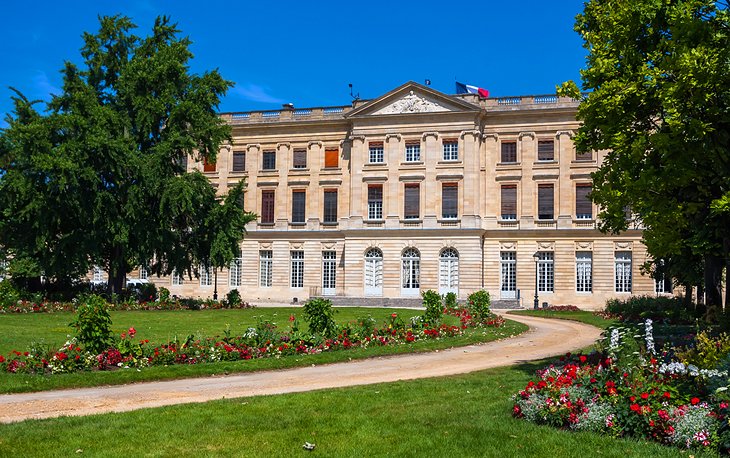
Musée des Beaux-Arts de Bordeaux
Set in the sprawling Jardin de la Mairie park, with its statue-filled formal gardens, the Musée des Beaux-Arts de Bordeaux (Museum of Fine Arts) occupies phase of the Hôtel de Ville (Town Hall). The museum offers an in-depth seem to be at European artwork history, with a series of paintings, sculptures, and drawings spanning the fifteenth to the twentieth centuries.
The everlasting series consists of masterpieces through Titian, Veronese, Rubens, Van Dyck, Delacroix, Matisse, and Picasso, amongst others. Paintings are prepared thematically, grouped by using generation and country, such as the Renaissance, 17th-century Dutch nonetheless lifestyles paintings, French classicism of the seventeenth and 18th centuries, and 19th-century Romanticism and Impressionism.
The museum additionally gives brief exhibitions on unique topics, such as British masterpieces from the Louvre Museum; landscape artwork from the seventeenth to twentieth centuries; drawings by means of Goya that disclose a center of attention on physiognomy; and artwork on the difficulty of liberty, created for the duration of the Enlightenment and thru the Romantic period.
Visitors will recognize the museum save that sells postcards, posters, and present items. The museum does no longer have a café, however site visitors may additionally revel in picnics on the park benches of the Jardin de la Mairie.
Address: 20 Cours d’Albret, Bordeaux
- Musée d’Aquitaine
Musée d’Aquitaine

Musée d’Aquitaine
The Museum of Aquitaine vividly illustrates the records of Bordeaux and the place of Aquitaine from prehistoric instances to the current day. The museum has amazing portions of antiquity, which include the Laussel Venus, an artifact from 25,000 BC, Gallic gold cash from round the 2nd century BC, and a 3rd-century statue of Hercules.
Other highlights of the series encompass the 13th-century discern of a knight of Curton and the 16th-century tomb of Michel de Montaigne. The monument to Montaigne as soon as stood at the entrance of the museum, and site visitors would contact the statue’s foot as a ritual to “absorb” the knowledge of the illustrious man.
The museum has a boutique that sells books and present items.
Address: 20 Cours Pasteur, Bordeaux
- Esplanade des Quinconces
Monument aux Girondins, the well-known fountain on the Place des Quinconces
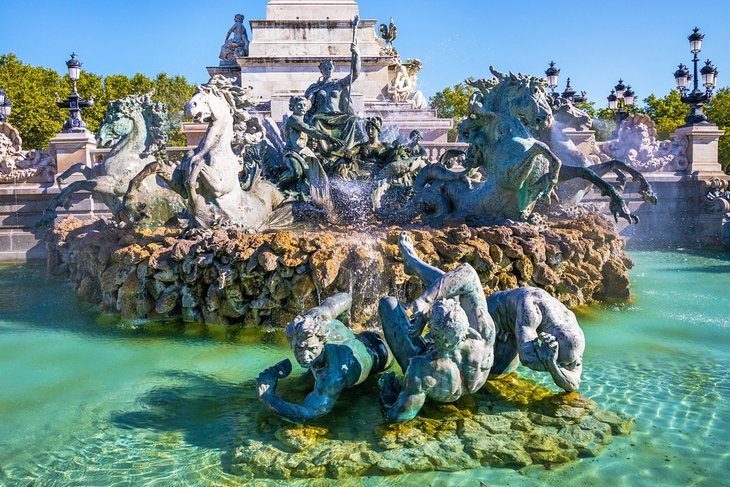
Monument aux Girondins, the well-known fountain on the Place des Quinconces
An expansive public area in central Bordeaux, the Esplanade des Quinconces is a tranquil turn away in the coronary heart of the city, simply a few blocks away from Le Grand-Théâtre. Flanked by using the Quai Louis XVIII alongside the river, the esplanade provides peaceable waterfront views.
Built from 1818 to 1828, the square’s huge fountain honors the Girondins, the team of republican politicians from the département of the Gironde who have been deputies in the Legislative Assembly all through the French Revolution. The authentic fountain used to be destroyed in the course of World War II and later restored. There are additionally statues of Montesquieu and Montaigne.
Another noteworthy enchantment close by is the Jardin Public, the place you can go to the botanical gardens and the herbal records museum. The 11-hectare Jardin Public is listed as a “Jardin Remarquable de France” (“Remarkable Garden of France”). The grounds consist of a picnic place and a salon de thé (tea salon) and a L’Orangerie that serves “cuisine bistronomique” (upscale bistro cooking) in the ultra-modern eating room or at shaded tables on the out of doors terrace.
Just south of the Place des Quinconces is the Rue Sainte-Catherine, a active pedestrianized avenue lined with many stores and cafés. This road is additionally the oldest current thoroughfare in Bordeaux, as it was once a avenue throughout Roman times.
Address: Place des Quinconces, Bordeaux
- Musée Mer Marine
This modern new museum permits site visitors to find out the world of sea navigation and ocean exploration.
The museum’s reveals about oceanography and navigation disclose the records of Bordeaux, a town that used to be as soon as Europe’s greatest port. On show are over 10,000 ancient objects associated to ocean adventures, which includes fashions of boats, navigation instruments, ocean maps, and atlases.
The famous on ocean exploration teach traffic about the fragility of marine ecosystems, with a focal point on options to environmental problems.
The Musée Mer Marine additionally affords cultural activities and transient famous of current artwork on the issues of the sea and seafaring.
Address: 89 Rue des Etrangers, Bordeaux
- Palais Gallien
Palais Gallien
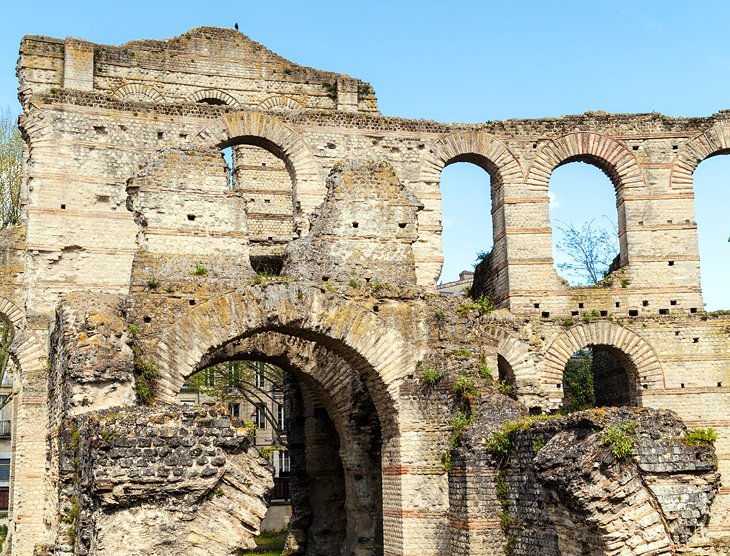
Palais Gallien
The Palais Gallien is a 2nd-century amphitheater and is the solely ultimate vestige of the Gallo-Roman generation in Bordeaux. This website affords a glimpse of existence throughout antiquity.
Originally, the amphitheater accommodated an target market of 20,000 (although it takes creativeness to conjure up the scene, considering that so little of the monument has been preserved). The tricky spectacles held right here protected gladiator combats and Roman video games with stay animals.
Address: Rue du Docteur Albert Barraud, Bordeaux
- Tour Pey-Berland
Tour Pey Berland

Tour Pey-Berland
This richly adorned tower is the freestanding belfry for the Cathédrale Saint-André. Built in the fifteenth century for the Archbishop Pey Berland, the UNESCO-listed tower exemplifies Flamboyant Gothic structure with its ornate details, hovering spires, and angled nook buttresses.
As a greater current addition, a 19th-century statue of Notre Dame d’Aquitaine adorns the pinnacle of the tower. The tower rings an 11-ton tenor bell that used to be hooked up in 1853.
Visitors might also climb to the viewing platform of the Pey-Berland Tower, which is open to the public Tuesday thru Sunday (with an admission fee). The ascent to the pinnacle of the 50-meter-tall tower requires a hike of 229 steps. Breathtaking vistas of the Bordeaux cityscape reward the effort.
Address: Place Pey-Berland, Bordeaux
- Pont de Pierre
Pont de Pierre

Pont de Pierre
One of the iconic points of interest in Bordeaux, the Pont de Pierre (Stone Bridge) spans the Garonne River with 17 sleek arches. Designed with the aid of engineer Claude Descamps, the Pont de Pierre was once executed in 1821 after years of development work. In the records of Bordeaux, this used to be the first bridge to go the Garonne River.
- Grosse Cloche
Grosse Cloche

Grosse Cloche
One of the remnants of medieval Bordeaux, the Grosse Cloche (Big Clock) is a monument constructed in the thirteenth and fifteenth centuries and has been restored to its former glory. The most specific points of this historic gate tower are the clock and the bell (weighing over 7,000 kilos), which is rung for one of a kind celebrations such as Remembrance Day (November 11th) and the Fête Nationale (July 14th).
The Grosse Cloche as soon as served as a jail and is redolent with memories from centuries past. Petty criminals have been locked up in the tower dungeons, which had been sealed shut by way of a 10-centimeter-thick door that was once locked with big bolts.
Address: forty five Rue Saint-James, Bordeaux
- Musée des Arts Décoratifs et du Design de Bordeaux
Musée des Arts Décoratifs et du Design de Bordeaux
Musée des Arts Décoratifs et du Design de Bordeaux | Ted Drake / picture modified
Featuring a remarkable series of ornamental artwork

objects, this museum shows furniture, tableware, jewelry, miniatures, and musical devices from the 17th, 18th, and nineteenth centuries.
The Musée des Arts Décoratifs et du Design de Bordeaux is housed in the beautiful Hôtel de Lalande, an based mansion constructed between 1775 and 1779. By traveling the museum, travelers acquire an understanding for the cultivated life-style and amazing decor of an aristocratic house throughout the Enlightenment duration in Bordeaux.
The museum’s boutique sells artisan-crafted jewelry, ceramics, and ornamental objects, whilst the on-site café (open Wednesday thru Sunday) serves nearby seasonal delicacies for lunch and Sunday brunch, alongside with strong point coffee, tea, and home made pastries. The café has satisfactory out of doors seating in the courtyard.
The museum is open each and every day besides Tuesdays and holidays. Opening hours are 11am till 6pm.
Address: 39 Rue Bouffard, Bordeaux
- Château de La Brède
Château de La Brède
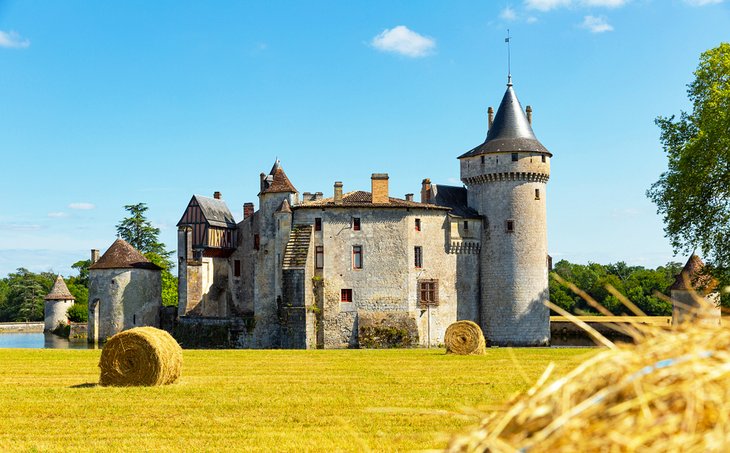
Château de La Brède
Listed as a Historical Monument, the Château de La Brède is a fortified medieval fortress about a 30-minute power south of Bordeaux. Built in the thirteenth century, the château bears a placing resemblance to Leeds Castle in Kent County, England.
Surrounded by means of a hundred and fifty hectares of wooded area and encircled through a giant moat, the Gothic château has a dreamy fairy-tale appearance. Dating returned to the thirteenth century, this feudal fortress was once in the beginning the dwelling of the lord of La Brède. The most famed of its proprietors was once the philosopher, Baron de Montesquieu, born in the fort on January 18th, 1689.
Visitors can also take a guided tour of the château and wander about the park, which is manicured with delightful English-style gardens.
The Château de La Brède is open to the public from March thru mid-November and to organizations (by pre-arranged booking) from March thru December. In July and August, the Château de La Brède is open each day. In different months, the château is open Wednesday thru Sunday.
Address: sixty five Avenue du Château, La Brède 33650
- Château de Cadillac
Château de Cadillac

Château de Cadillac
About 35 kilometers southeast of Bordeaux, the Château de Cadillac is a categorised Historical Monument that was once the dwelling of the Dukes of Épernon. Overlooking the Garonne River, the citadel used to be constructed between 1598 to 1620 and is one of the greatest examples of classical French architecture.
This majestic 17th-century château elements a luxurious indoors entire with intricately sculpted fireplaces, refined ceiling paintings, and lavish tapestries. The grounds encompass a formal French garden.
The château is open to site visitors year-round for guided excursions (in French) or self-guided tours, with a booklet on hand in a range of languages. The château is open each and every day from mid-June thru September and each day barring Mondays from October via May.
Throughout the year, unique activities and exhibitions are held at the château.
Address: four Place de la Libération, Cadillac-sur-Garonne 33410
- Abbaye de La Sauve-Majeure
Abbaye de La Sauve-Majeure
Abbaye de La Sauve-Majeure
Located 25 kilometers from Bo

rdeaux in the geographical region of the Entre-Deux-Mers region, the Abbaye de La Sauve-Majeure is a UNESCO World Heritage Site. The abbey nestles in a serene meadow, surrounded through 200 hectares of densely wooded grounds. The title “Sauve-Majeure” comes from “Silva Major,” which ability “Great Forest.”
Dating from the eleventh to thirteenth centuries, the abbey was once constructed as a region of non secular worship for the pilgrims on the Way of Saint James route to Santiago de Compostela. The abbey is famend for its finely carved capitals, which are viewed to be amongst the best examples of Romanesque art.
The Abbaye de la Sauve-Majeure is open open each day from mid-June thru September and each and every day barring Mondays from October via May. Guided excursions are available. Visitors might also discover the three-hectare property; the grounds encompass a lapidary museum and a picnic area.
Address: 14 Rue de l’Abbaye, La Sauve 33670
- Prehistoric Cave Paintings at the Grotte de Pair-non-Pair
One of the oldest adorned caves in the world, the Grotte de Pair-non-Pair points prehistoric drawings of horses, deer, and mammoth. In 1881, François Daleau found this cave with the stays of an 80,000-year-old Neanderthal man and an 18,000-year-old Cro-Magnon man. Archaeologists additionally have determined 15,000 equipment from prehistoric times.
The Grotte de Pair-non-Pair is open to the public for guided visits. The guided excursions are in French.
Address: two Chemin de Pair non Pair, Prignac-et-Marcamps 33710
